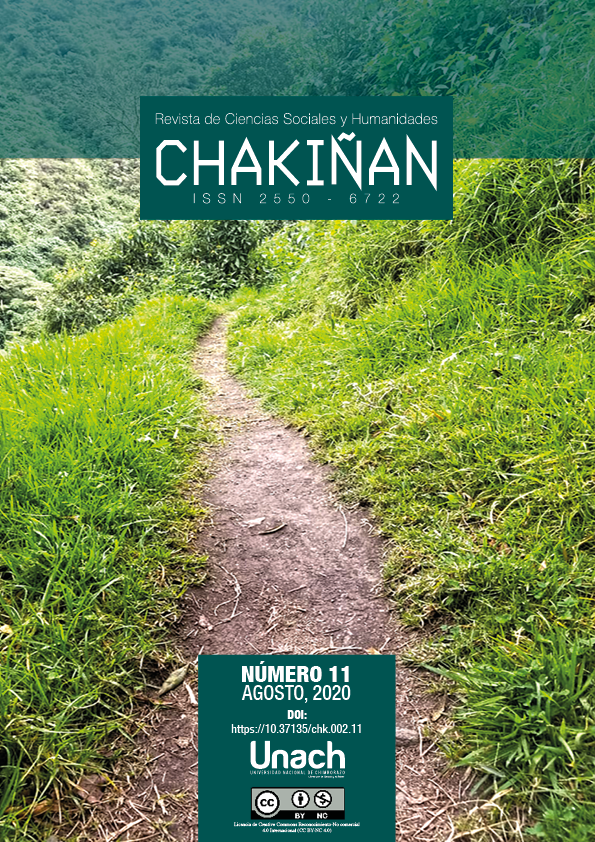VIRTUOUSNESS IN SCHOOL ORGANIZATIONS ASOCIATED WITH AUTHENTIC LEADERSHIP OF ITS AUTHORITIES
Main Article Content
Abstract
The present study was developed through a reflection exercise on the elements that contribute to strengthen the quality of education in Ecuador, from the actions taken by the authorities, teachers and students; its theoretical framework of analysis consisted in the Positive Psychology applied to school as a virtuous organization. The objective tried to identify profiles of school organizations perceived as virtuous, associated with the levels of authentic leadership found in their authorities. It was used a non-probability sample of 209 educational authorities through the application of scales of virtuosity perceived in educational organizations and authentic leadership, and also in authorities adapted to Ecuadorian contexts. First of all, the current correl ation between the dimensions of perceived virtuosity in school organizations and the dimensions of authentic leadership in authorities was established; afterwards, through the use of techniques of k and
univariate analysis of variance (ANOVA), two levels of authentic leadership and two profiles of virtuous school organizations related to those levels of leadership were identified, thus: 1) virtuous school organizations with authentic leaderships strengthened in their authorities; and, 2) school organizations on the way to virtuosity, with authentic leaderships in tandem with the authorities.
Downloads
Article Details
Conference Proceedings Volume
Section
Responsibility of the authors:
The authors are responsible for the ideas and data collected in the manuscripts. They are additionally accountable for the fidelity of the information, the correction of the citations, the right to publish any material included in the text, and the presentation of the manuscript in the format required by the Journal (WORD template). A manuscript forwarded to CHAKIÑAN must not have been published before, nor must it have been submitted to another means of publication.
Copyright:
Published articles do not necessarily compromise the viewpoint of the CHAKIÑAN JOURNAL. The Journal is aligned to the policy of the licence de Creative Commons Reconocimiento-No comercial 4.0 Internacional (CC BY-NC 4.0). Each author retains the right to the paper published in the Chakiñan journal.
Privacy statement
The personal data and email addresses entered in this magazine will be used exclusively for the purposes stated by the publication and will not be available for any other purpose or person.
How to Cite
Share
References
Cameron, K. S., Bright, D. & Caza, A. (2004). Exploring the relationships between organizational virtuousness and performance. American Behavioral Scientist, 47(6), 766-790.
Cameron, K. (2010). La desviación positiva aplicada al liderazgo. Revista de la Asociación Española de Dirección de Personal. (4), 12-17.
Cameron, K., Mora, C., Leutscher, T. & Calarco, M. (2011). Effects of Positive Practices onOrganizational Efectiveness. The Journal of Applied Behavioral Science, XX(X), 1– 3.
Cohen, J. (1988). Statistical power analysis for the behavioral sciences. (2.ª Ed). Hillsdale, NJ; Erlbaum.
Gardner, W.L; Avolio, B. J; Luthans, F.; May, D.R. & Walumbwa, F. (2005). “Can you see the real me?” A self-based model of authentic leader and follower development. The Leadership Quarterly, 16(3), 343–372.
Ilies, R., Morgeson, F. P. & Nahrgang, J. D. (2005). Authentic leadership and eudaemonic wellbeing: Understanding leader–follower outcomes. The Leadership Quarterly, 16(3), 373-394.
Lupano, M. L. (2017). Virtudes organizacionales, performance y satisfacción laboral. Diferencias según variables individuales y organizacionales en empleados argentinos. Psicodebate, 17(1), 35–50. doi: http://dx.doi.org/10.18682/pd.v17i1.637.
Lupano, M. L. & Castro, A. (2018). Influencia de las virtudes organizacionales sobre laperformance laboral. Un estudio en organizaciones argentinas. Centro Interamericano de Investigaciones Psicológicas y Ciencias Afines(CIIPCA) , (35).
Luthans, F. & Avolio, B. (2003). Authentic leadership: a positive developmental approach. In K.S.Cameron, J.E. Dutton & R.E. Quinn (eds.) Positive Organizational Scholarship:
Foundations of a New Discipline (pp. 241–58). San Francisco, CA: Berrett-Koehler.
Meyer, J. & Allen, N. (1996). The measurement and antecedents of affective, continuance and normative commitment to the organization. Journal of Occupational & Organizational Psychology, 63(1), 1-18.
Peterson, C. (2006). A primer in positive psychology. New York, NY: Oxford University Press.ISBN 9780195188332.
Robbins, S. & Jugde, T. (2009). Comportamiento organizacional. México: Prentice Hall.
Salanova, M., Llorens, S. & Martínez, I. (2016). Aportaciones desde la Psicología Organizacional Positiva para desarrollar organizaciones saludables y resilientes. Papeles del Psicólogo, 37(39), 137-184.
Seligman, M. E. P. (1999). The President’s address. APA 1998 Annual Report. American Psychologist, 54, 559-562.
Shamir, B. & Eilam, G. (2005). «What’s your story?» A life-stories approach to authentic leadership development. The Leadership Quarterly, 16(3), 395-417.
Unda, F. (2018). Virtuosidad percibida en organizaciones escolares, bienestar psicológico en adolescentes y liderazgo auténtico en docentes (tesis doctoral). Universidad de Palermo, Argentina.
Unda, F. & Lupano, M. (2019). Perfiles de virtuosidad en organizaciones escolares en relación con los niveles de bienestar psicológico en adolescentes ecuatorianos. Cátedra, 2(2), 76-93. Recuperado de http://revistadigital.uce.edu.ec/index.php/CATEDRA/article/view/1594
Valsania, S. (2014). Influencia del liderazgo auténtico en las conductas extra-rol de los empleados (tesis doctoral). Universidad Nacional de Educación a Distancia, Madrid, España.
Vásquez, C. & Hervás, G. (2014). La Ciencia del Bienestar: Fundamentos de una Psicología Positiva. Alianza: Madrid.
Walumbwa, F. O., Avolio, B. J., Gardner, W. L., Wernsing, T. S. & Peterson, S. J. (2008). Authentic leadership: Development and validation of a theory-based measure. Journal of Management, 34, 89–126. doi: https://doi.org/10.1177/0149206307308913.






